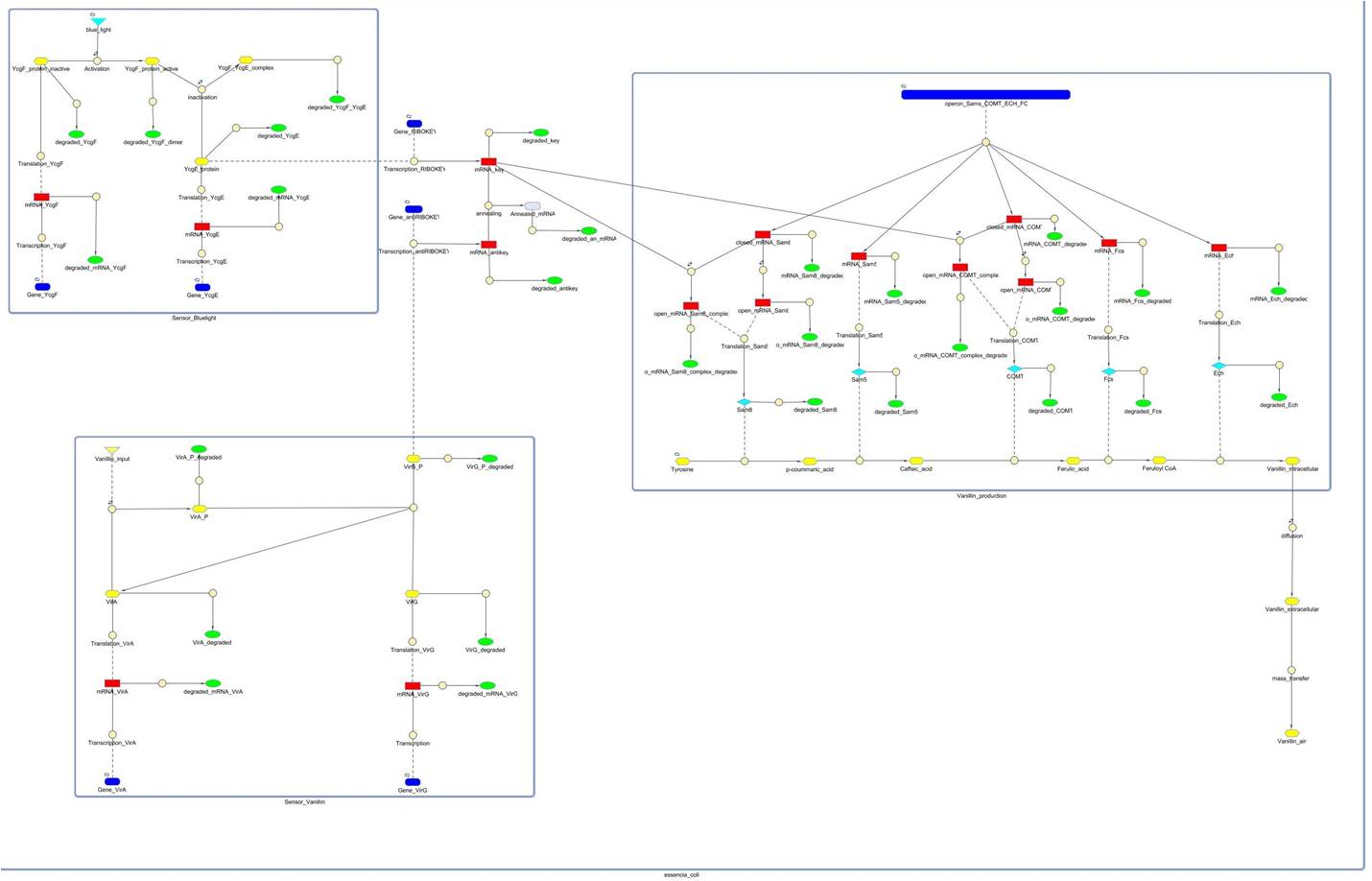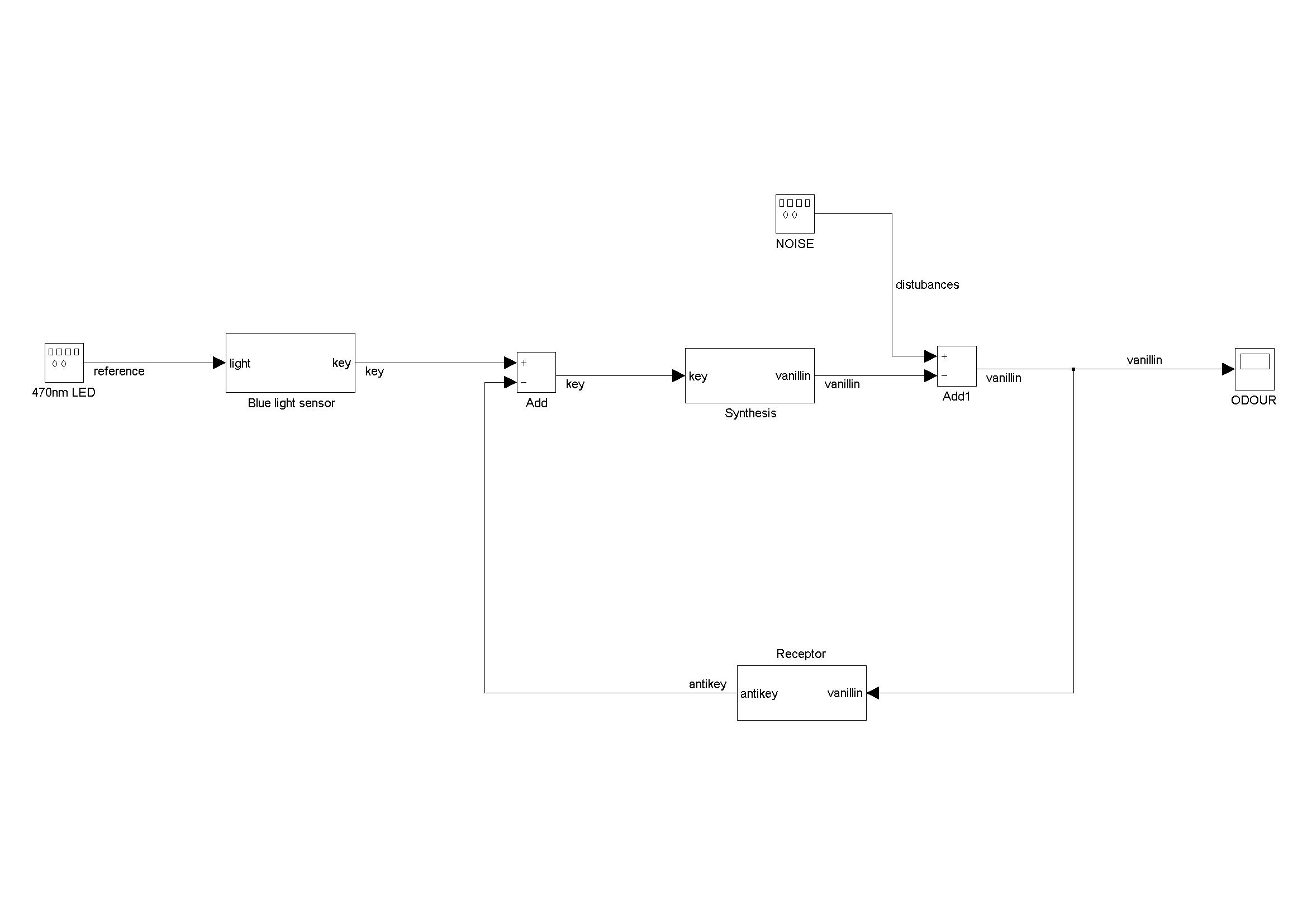Team:KULeuven/Design/Integrated Model
From 2009.igem.org
(→Biological implications) |
Bart Bosmans (Talk | contribs) |
||
| Line 6: | Line 6: | ||
=Full model= | =Full model= | ||
| - | The complete model of our vanillin producing bacteria is shown in the next figure. The boxes around some species have | + | The complete model of our vanillin producing bacteria is shown in the next figure. The boxes around some species have no biological meaning |
they merely serve to distinguish between the different subcomponents of our system. | they merely serve to distinguish between the different subcomponents of our system. | ||
| Line 18: | Line 18: | ||
=Control theory= | =Control theory= | ||
| - | Control theory is an interdisciplinary branch of engineering and mathematics, that deals with the behavior of dynamical systems. The purpose is to design a controller | + | Control theory is an interdisciplinary branch of engineering and mathematics, that deals with the behavior of dynamical systems. The purpose is to design a controller which controls the system so that it behaves as desired. There exists several criteria to measure the performance of the controller. |
==Stability== | ==Stability== | ||
| - | + | The system can be called stable if, no matter what the input signal (the blue light) is, the output (vanillin concentration) will remain finite after an infinite amount of time. | |
==Tracking problem== | ==Tracking problem== | ||
| Line 30: | Line 30: | ||
==Disturbance rejection== | ==Disturbance rejection== | ||
| - | Most controlled system are disturbed by other systems in their | + | Most controlled system are disturbed by other systems in their neighbourhood, in our case imagine someone adding an extra amount of vanillin to the environment. We don't want to see these disturbances in our output of vanillin, meaning that the vanillin concentration remains at the desired level. |
The disturbance rejection criteria indicates the ability of the system to reject those inputs. | The disturbance rejection criteria indicates the ability of the system to reject those inputs. | ||
==Robustness== | ==Robustness== | ||
| - | As with every model, our model of the bacteria is not perfect. Robustness is | + | As with every model, our model of the bacteria is not perfect. Robustness is a property of a property, we say that the stabilizes the system in a robust way if also stabilizes all systems that are similar to the modelled system. It's then assumed that the controller will also stabilize the real system as it is also assumed to be similar to the modelled system. |
=Biological implications= | =Biological implications= | ||
Revision as of 20:42, 27 September 2009
Full model
The complete model of our vanillin producing bacteria is shown in the next figure. The boxes around some species have no biological meaning they merely serve to distinguish between the different subcomponents of our system.
Because we want to optimize the design of the feedback loop in our system, we developed a block scheme of the bacteria. Which can be used to develop some theories about its performance.
Control theory
Control theory is an interdisciplinary branch of engineering and mathematics, that deals with the behavior of dynamical systems. The purpose is to design a controller which controls the system so that it behaves as desired. There exists several criteria to measure the performance of the controller.
Stability
The system can be called stable if, no matter what the input signal (the blue light) is, the output (vanillin concentration) will remain finite after an infinite amount of time.
Tracking problem
This criterium is an indication of how well the output well follow the wanted reference system, we want the difference between the output and the wanted reference signal as small as possible.
Disturbance rejection
Most controlled system are disturbed by other systems in their neighbourhood, in our case imagine someone adding an extra amount of vanillin to the environment. We don't want to see these disturbances in our output of vanillin, meaning that the vanillin concentration remains at the desired level. The disturbance rejection criteria indicates the ability of the system to reject those inputs.
Robustness
As with every model, our model of the bacteria is not perfect. Robustness is a property of a property, we say that the stabilizes the system in a robust way if also stabilizes all systems that are similar to the modelled system. It's then assumed that the controller will also stabilize the real system as it is also assumed to be similar to the modelled system.
Biological implications
Because the controller has to be implemented in 'biological technology', we optioned for the simplest possible design of controller, the proportional controller. The gain in the feedback loop can be adjusted by the use of low/high copy plasmids for the genes involved in the the transduction of the signal in the feedback loop.
 "
"









